When I accepted the invitation for Señor Saffron to cater at an event in Oaxaca about the gastronomic exchange between the New World and the Old, I took a look at a map of Mexico.
"Hm, Chiapas is right next to Oaxaca..." After a skim of the Wikipedia page on the semi-autonomous state and seeing it was home to the Mayan ruins of Palenque and host to a unique cuisine, I decided to book a stay at Hotel Sombra del Agua in San Cristobal de la Casas. It was only then that I realised that, despite Oaxaca and Chiapas being right next to each other, the journey would involve a ten and a half hour overnight bus ride...
But it would be worth it, because this is where I would have my meal of the year.
When I booked my stay on Hotels.com, it said I would have 20% off any meal at the hotel restaurant, Tarumba. I'm normally skeptical of eating at hotels and prefer eating my way around town. Passing the restaurant on the way to my room, though, a little advert caught my eye for a seven course dining experience led by the chef, Jorge Gordillo.
I'd been burned before by pretentious and overpriced "gastronomic experiences", so before committing I decided to try dinner at the restaurant... and then breakfast... and then lunch (albeit over the course of a few days, I still had to try other restaurants and cafes). I was convinced, and went ahead and booked myself a spot for my last day in Chiapas.
Late dinner after an eighteen-hour return journey to the ruins of Palenque.
Walking into the restaurant, I took my place at the bar where I was greeted with a personalised envelope and message explaining how the meal was supposed to represent the feelings and sensations that one would feel when not only eat Chiapanecan cuisine, but also the traditions that form the region's dining culture. I asked if anyone else had booked the experience for the day, but it seemed I would be embarking on this culinary voyage on my own.

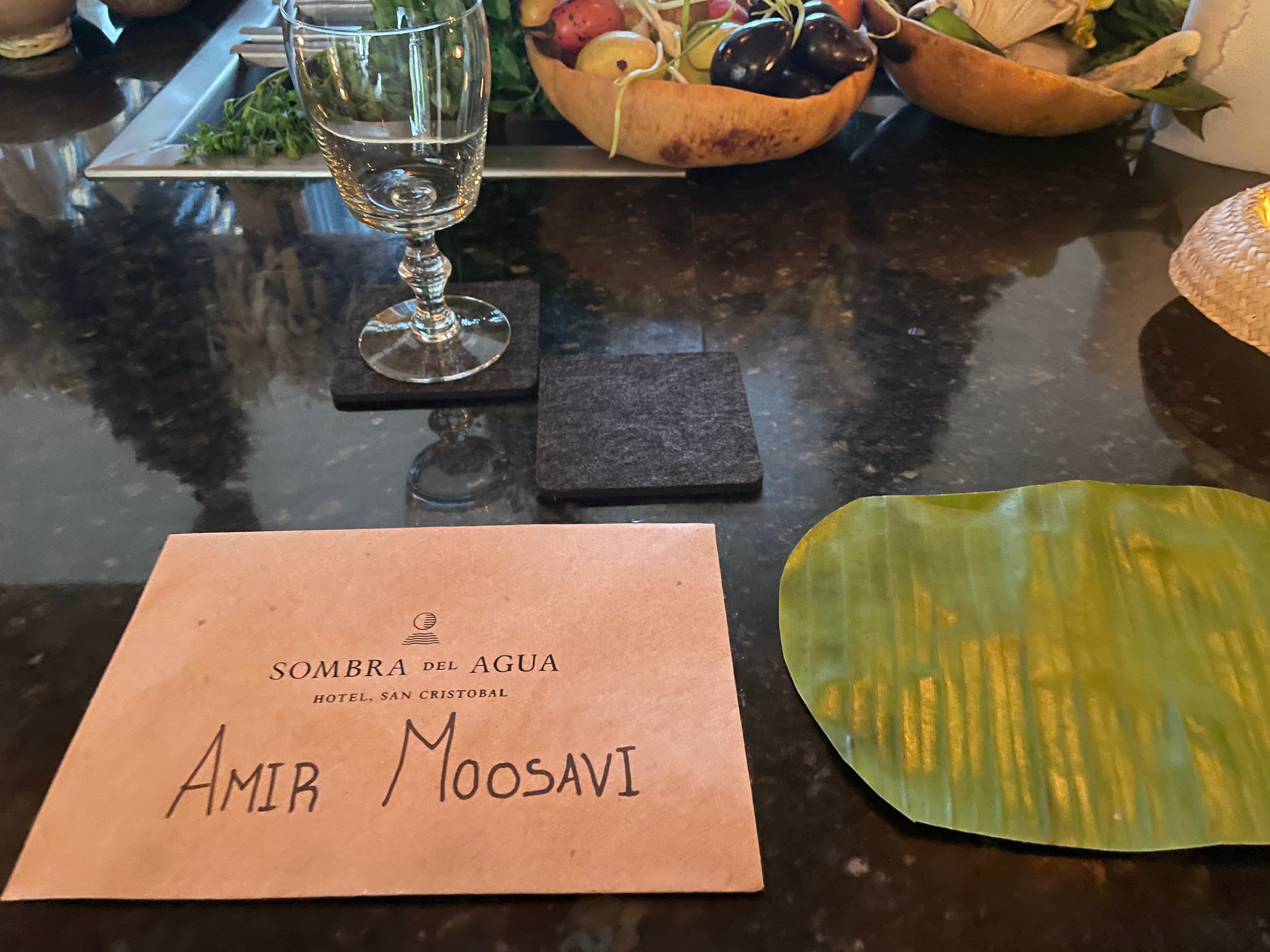
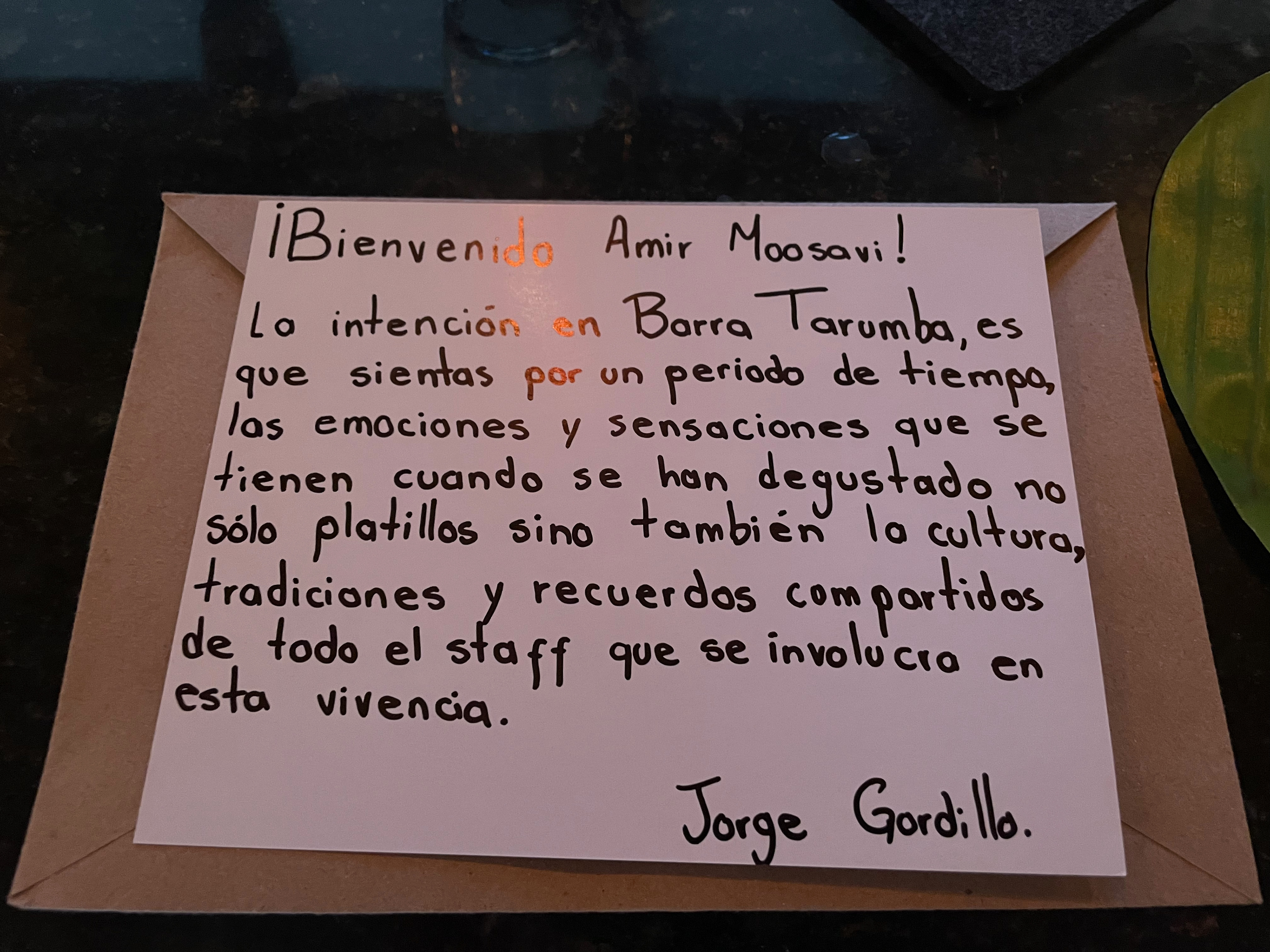
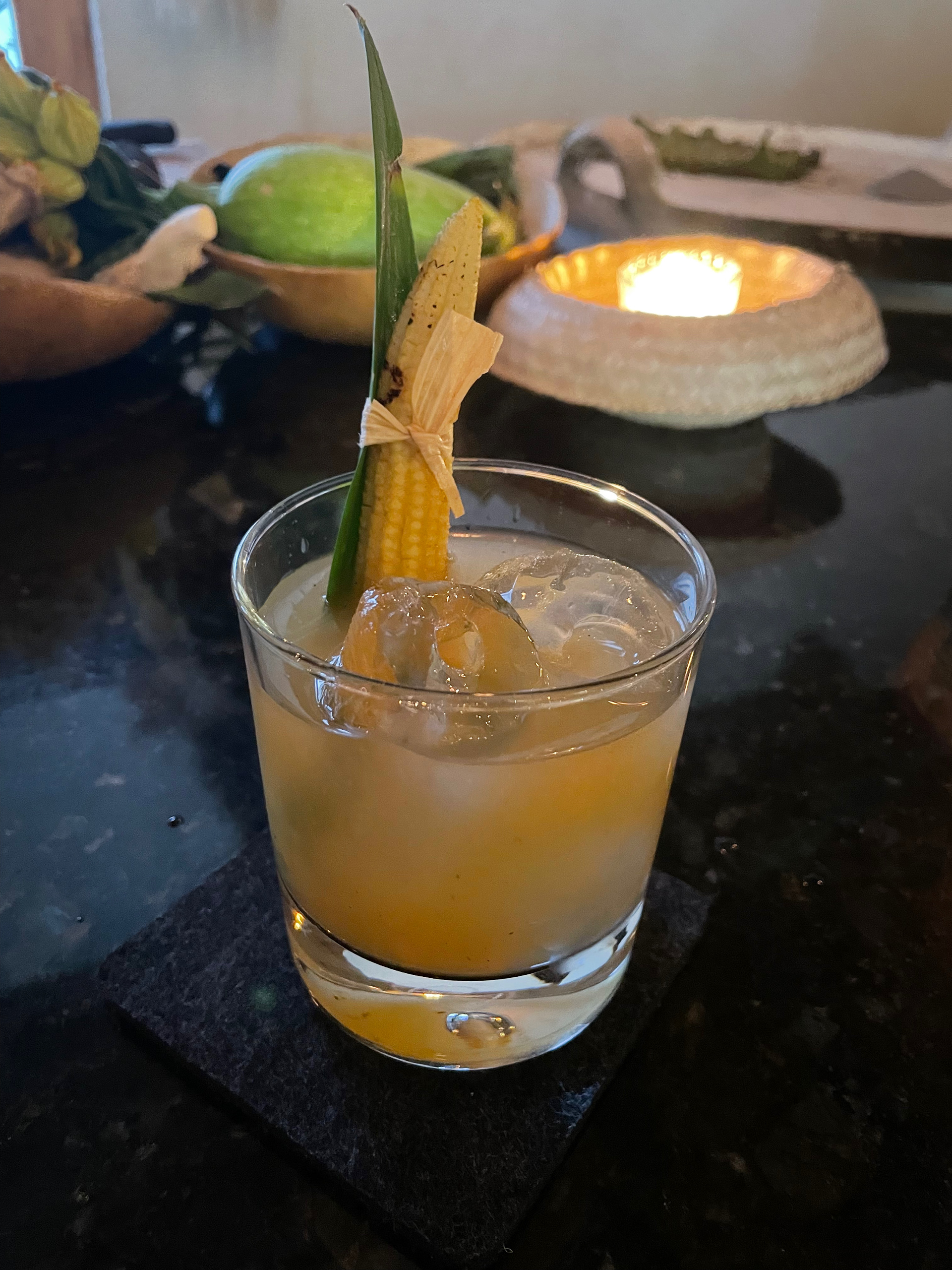
I was welcomed with a cocktail made with pox (pronounced posh), a corn and sugar-based liquor that is traditionally considered to have restorative properties ("pox" comes from the Tzotzil for "medicine" or "healing"). for While drinking this, Gordillo and his team prepared the first course in front of me: a memela (a corn tortilla similar to a sope or huarache*) stuffed with chayote and topped with with pumpkin seeds and a salsa freshly made in a molcajete from wild tomatillos.
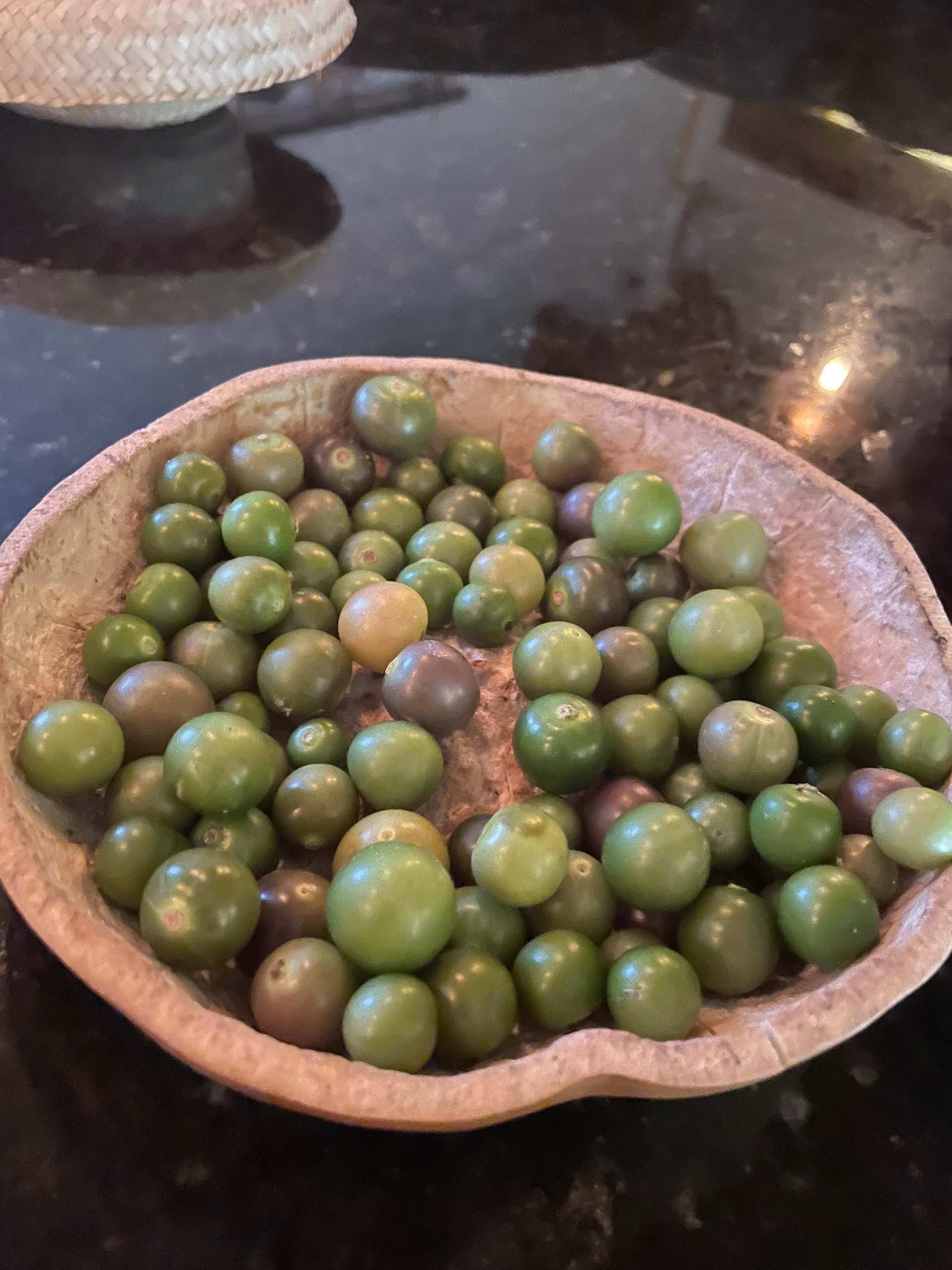
Wild tomatillos.

Chayote.
Chayote memela with pumpkin seeds / Memela de chayote con salsa molcajeteada de tomatillos silvestres, y pepita de calabaza.
The memela was a tangy delight with just a bit of a kick to it. The fresh tomatillos packed more flavour than the canned variety I was used to, and there was a nice crunch from the chayote.
On to the second course, this would be Gordillo's take on esquites. A popular street food in Mexico (in Iran it is known as ذرت مکزیکی/zorrat mekziki, "Mexican corn"), it normally consists of boiled corn served in a cup with common toppings and sauces being lime juice, chilli powder, hot sauce, mayonnaise, and cheese. This variation would have beetroot mayonnaise, and the corn would be from xilotes, also known as elotitos: baby corn. I usually don't care for baby corn (or any other "baby" variations of vegetables such as carrots or potatoes), but I'd nearly always had them raw. Applying heat with a blowtorch seemed to do the trick, and the esquites were topped with basil and corn husk hairs, the latter of which were also tinged with a blowtorch.
I'd had esquites a couple of times before and it was always a pleasant enough snack, but the subtle beetroot mayonnaise and the textures of the tinged corn husk hairs took this dish to another level.
Heating the xilotes.
Tinging the corn husk.
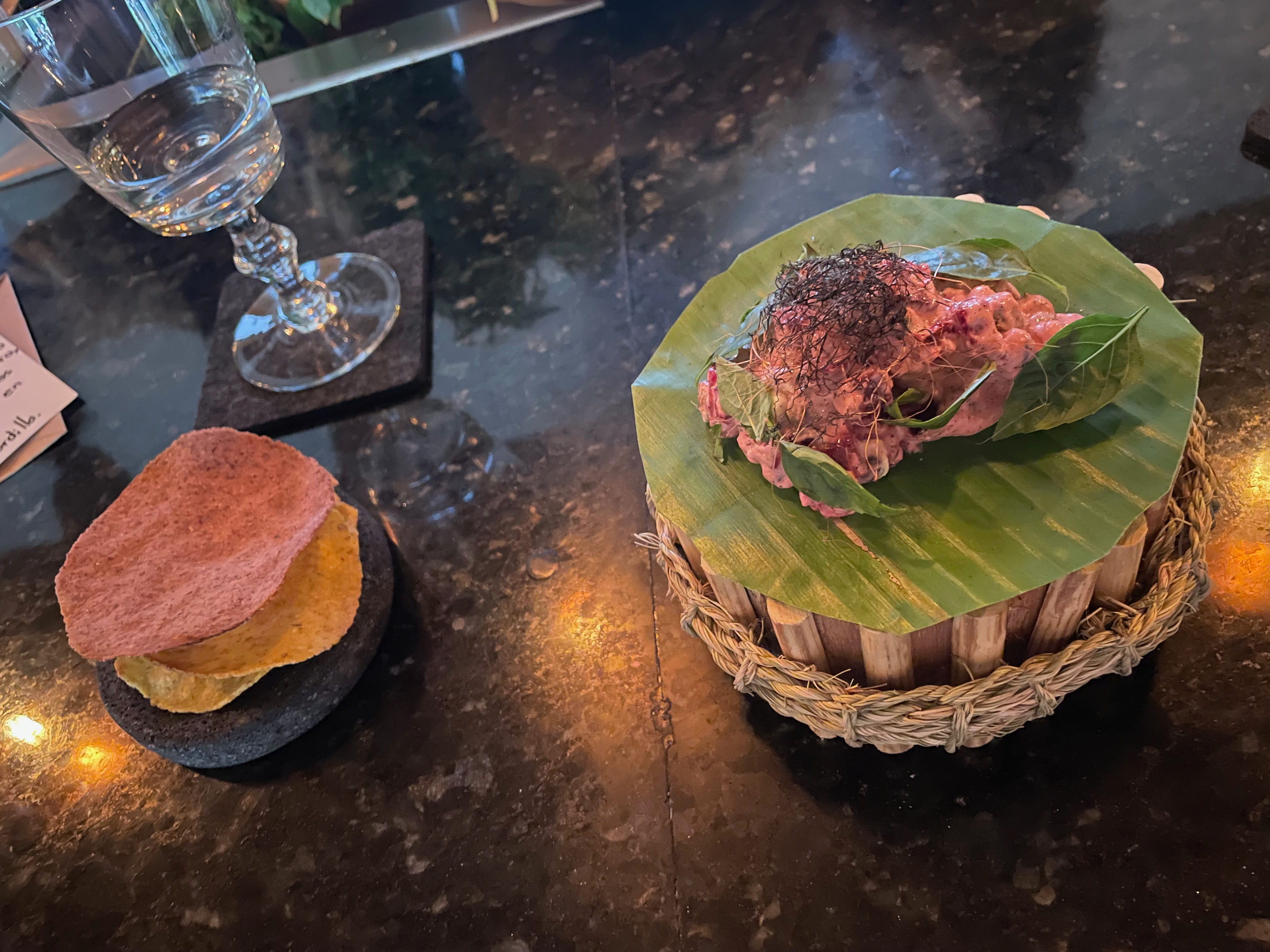
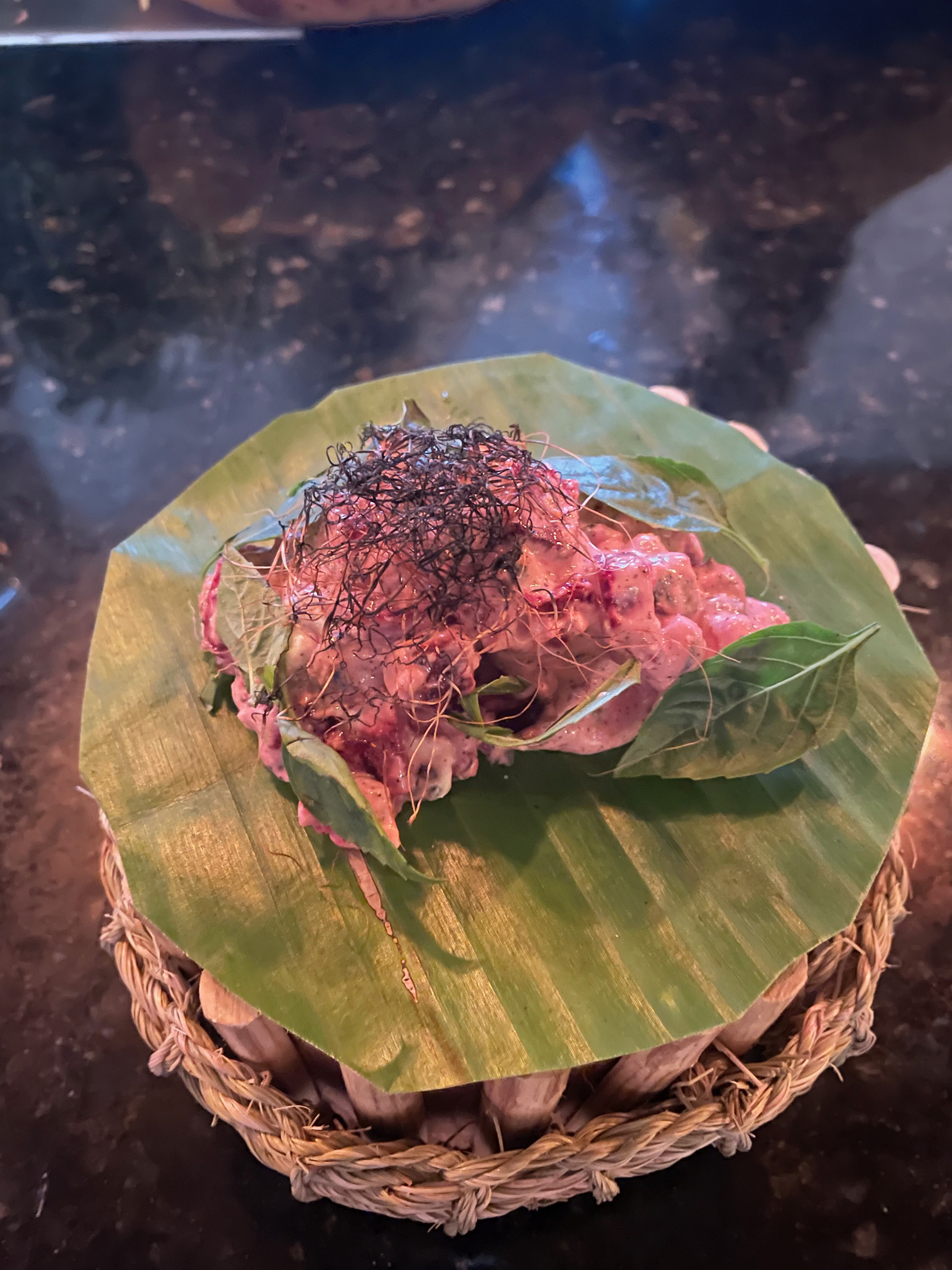
Esquite de betabel con xilotes.
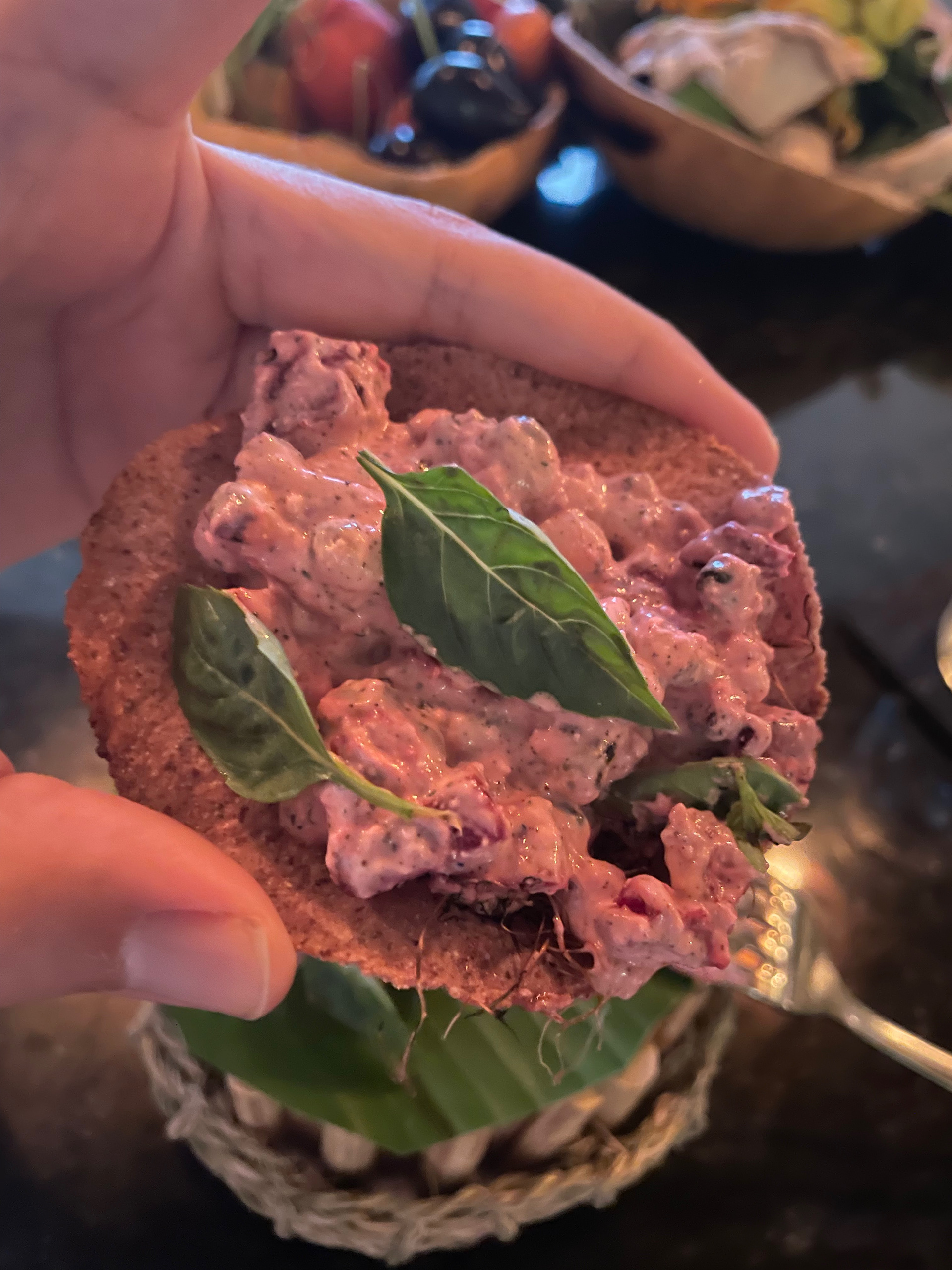
Sat in front of me throughout the meal were a bowl of tiny avocados. These would form part of the salad that followed, along with roasted apples and blackberries. Of a variety that was pronounced "sish", their skin was so smooth and tender that they were served skin-on. The salad was then topped with a guava vinaigrette, adding a tropical zest to the delectable dish.


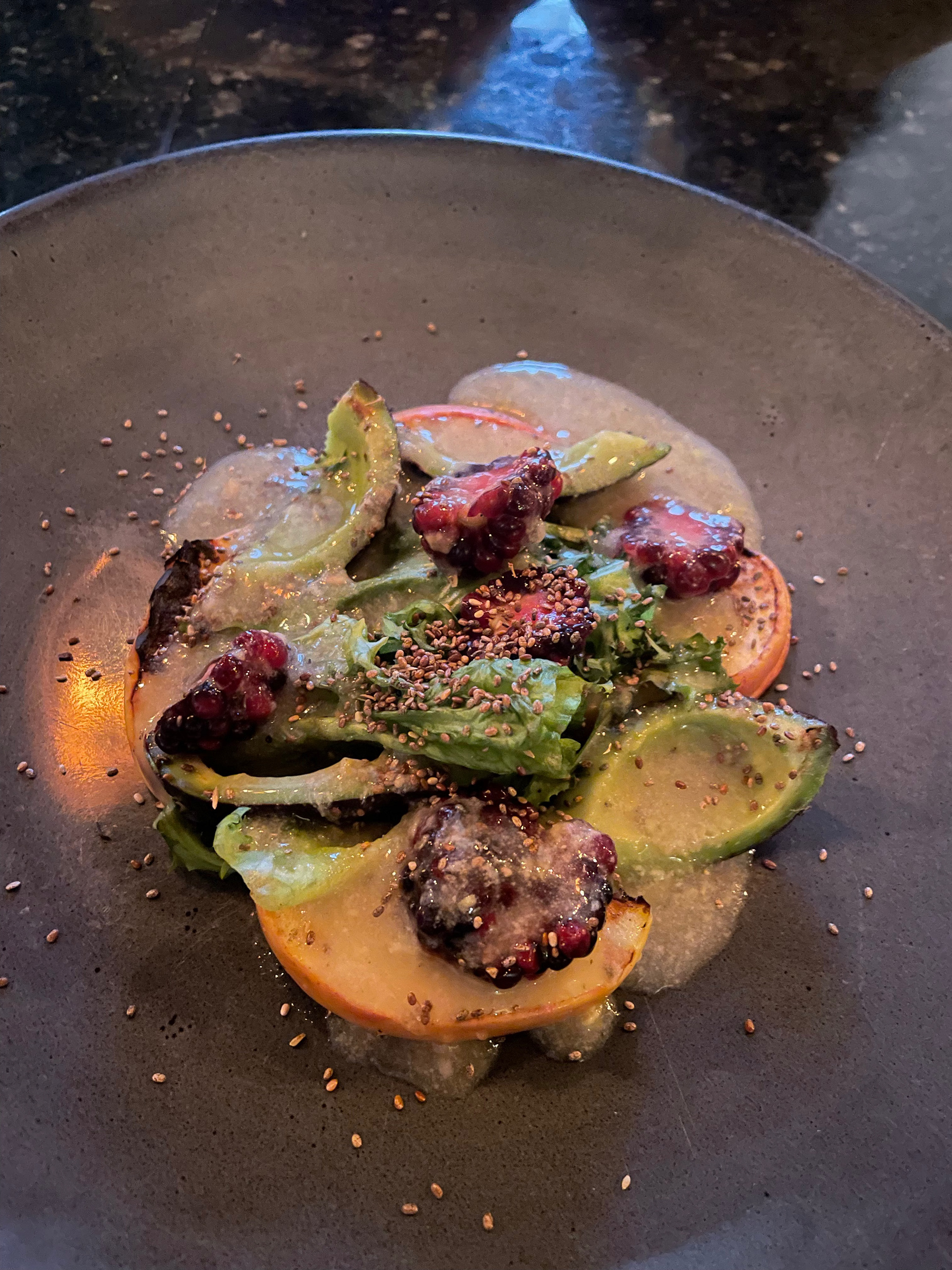
Already won over by the first three courses, now it was time for a caldito (broth) made with roasted chile poblano, mushrooms, and calabaza criolla (a kind of squash).
The seafood course was grilled snook (róbalo) sandwiched between a pea puree and pumpkin/squash flower (flor de calabaza), with a beetroot sauce poured over it. This was my first time having beetroot with fish, and it really brought the whole dish together.
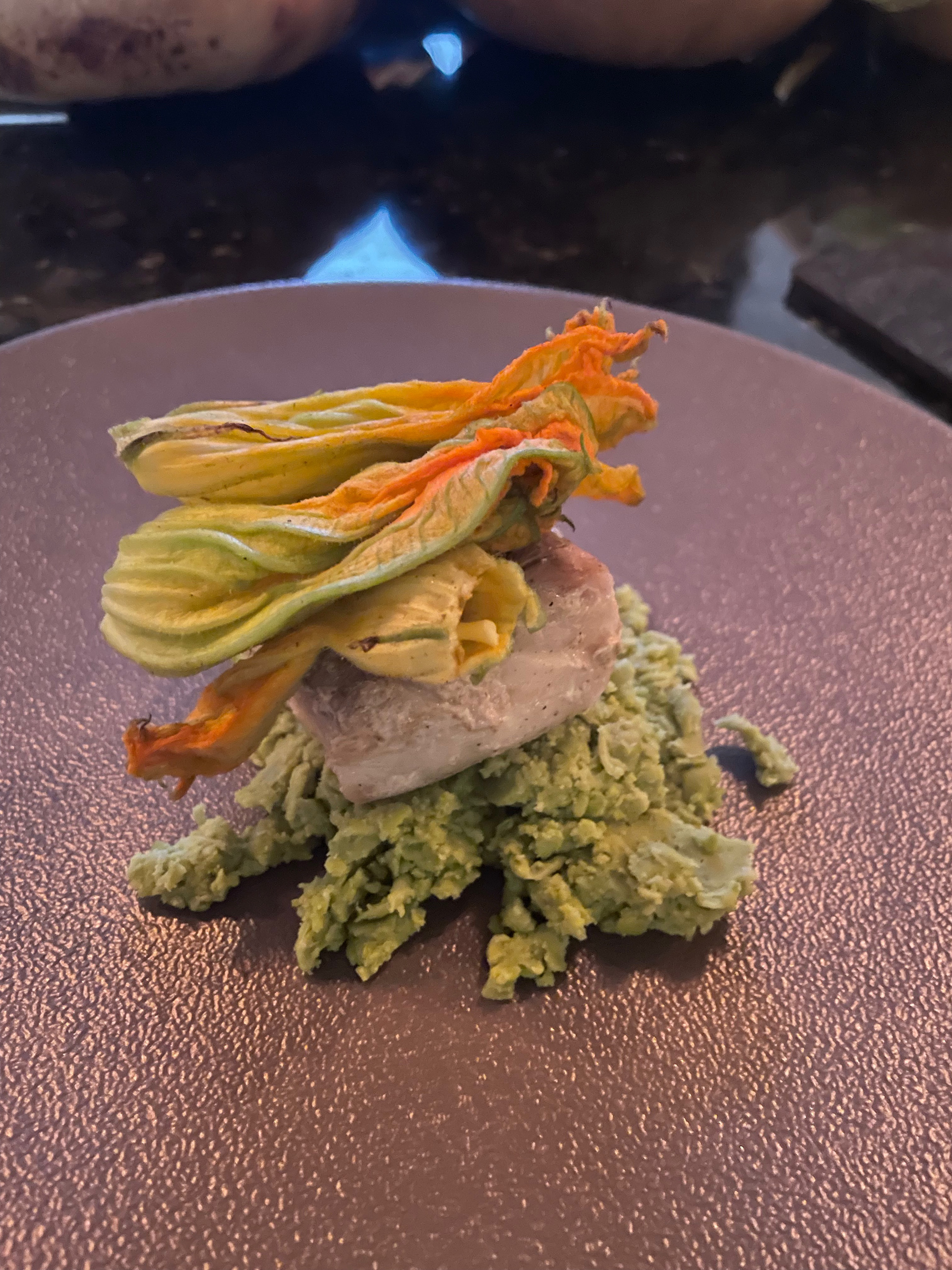

From the sea to land, the meat course consisted of a tostada topped with cecina de res (salted marinated beef), guacamole, fresh frijoles tiernos (baby beans), and "mystical ash". Accompanying this was a soup made with chile de simojovel and cilantro criollo.
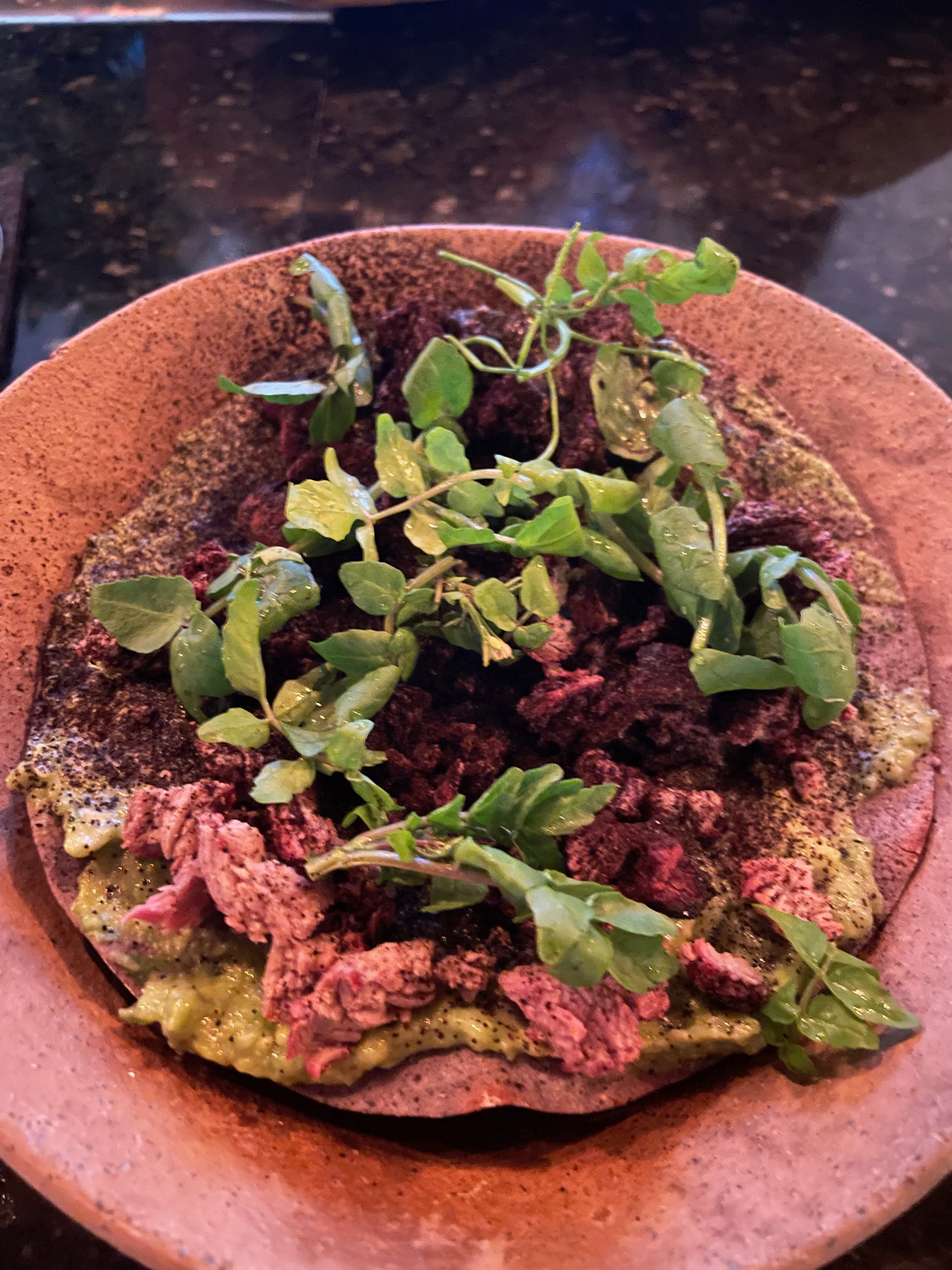
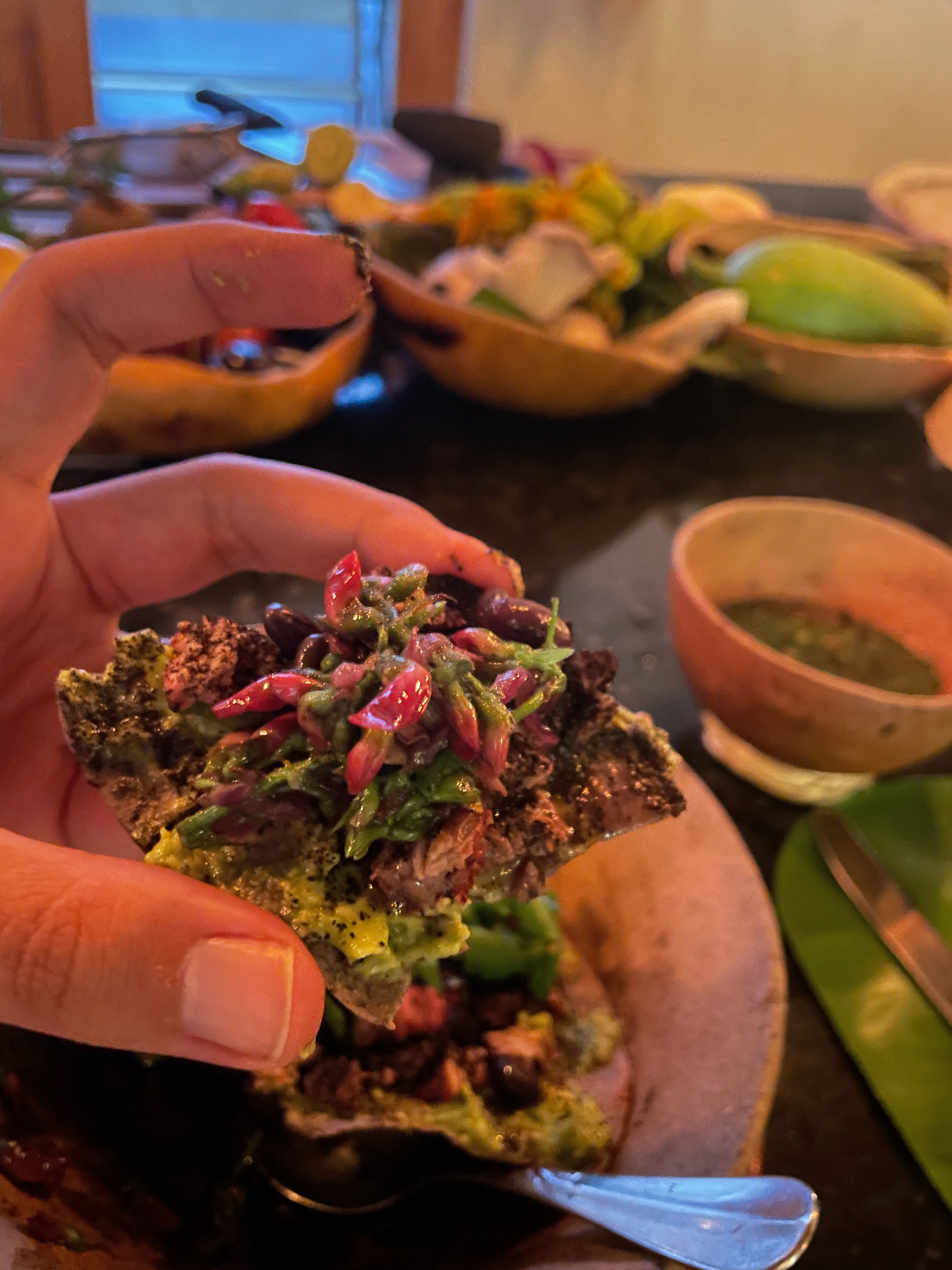
When it was time for the final course, I was expecting something made with chocolate and/or vanilla, as not only are they used in desserts the world over, they are native to Mexico.
So I was surprised to see that a tomato would form part of the dish. But this was no ordinary tomato, but a tomate de árbol (tree tomato), also known as a tamarillo. Native to the Andes, it tastes more like passion fruit than its garden-variety counterpart. Bringing out the blowtorch again to help release the fruit's sugars, it was then sliced along with some strawberries, and served with a poxini (caramel-covered popcorn) sorbet, with cajeta (dulce de leche) drizzled over.
Never did I think that a) I would have a tomato-based dessert, and b) that I would like it so much. Fruit-based desserts are hit-and-miss for me, but this was a clear winner, and I can't say I had anything like it before.
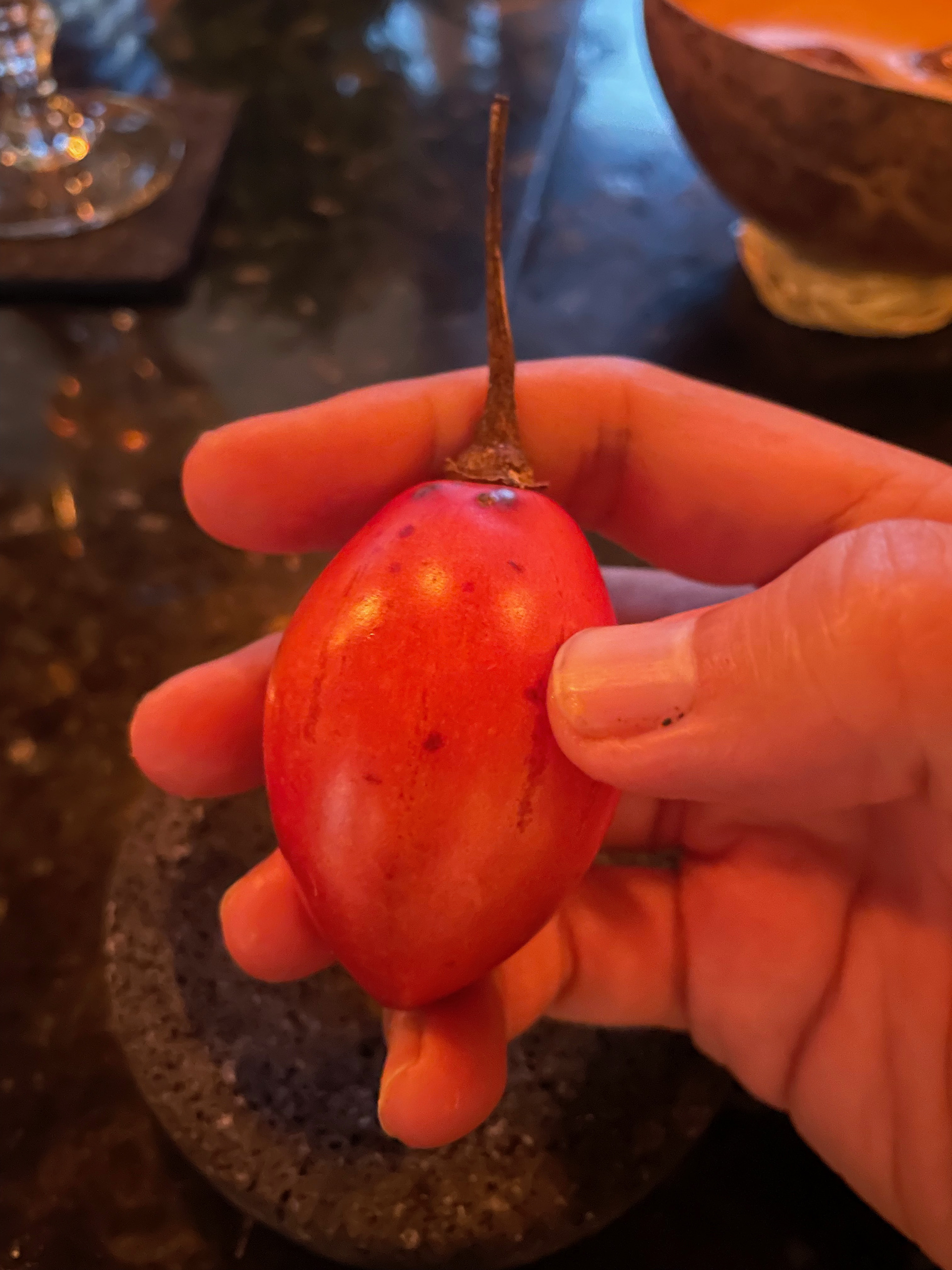

At the end of the meal, we each held a lit candle to bring good luck, and then placed them on the bar. It was clear that this whole experience was something near and dear to Gordillo, and that a lot of heart went into its conception, and talent and hard work into its execution. I told him that I thought that it was better than Pujol; later that year I dined at a two Michelin star restaurant in Istanbul that, while not bad, was not even half as good.
It's heartening to see that Mexican cuisine is becoming more popular thanks to various cooking shows, and that people are increasingly aware that it consists of more than tacos and burritos. I hope that the distinctive cuisines of regions such as Chiapas receive their due recognition in the years to come.
Speaking of Istanbul, my runner up for meal of 2022 is Yeni Lokanta, where traditional Turkish flavours were slightly modernised without losing their original character or flavour:


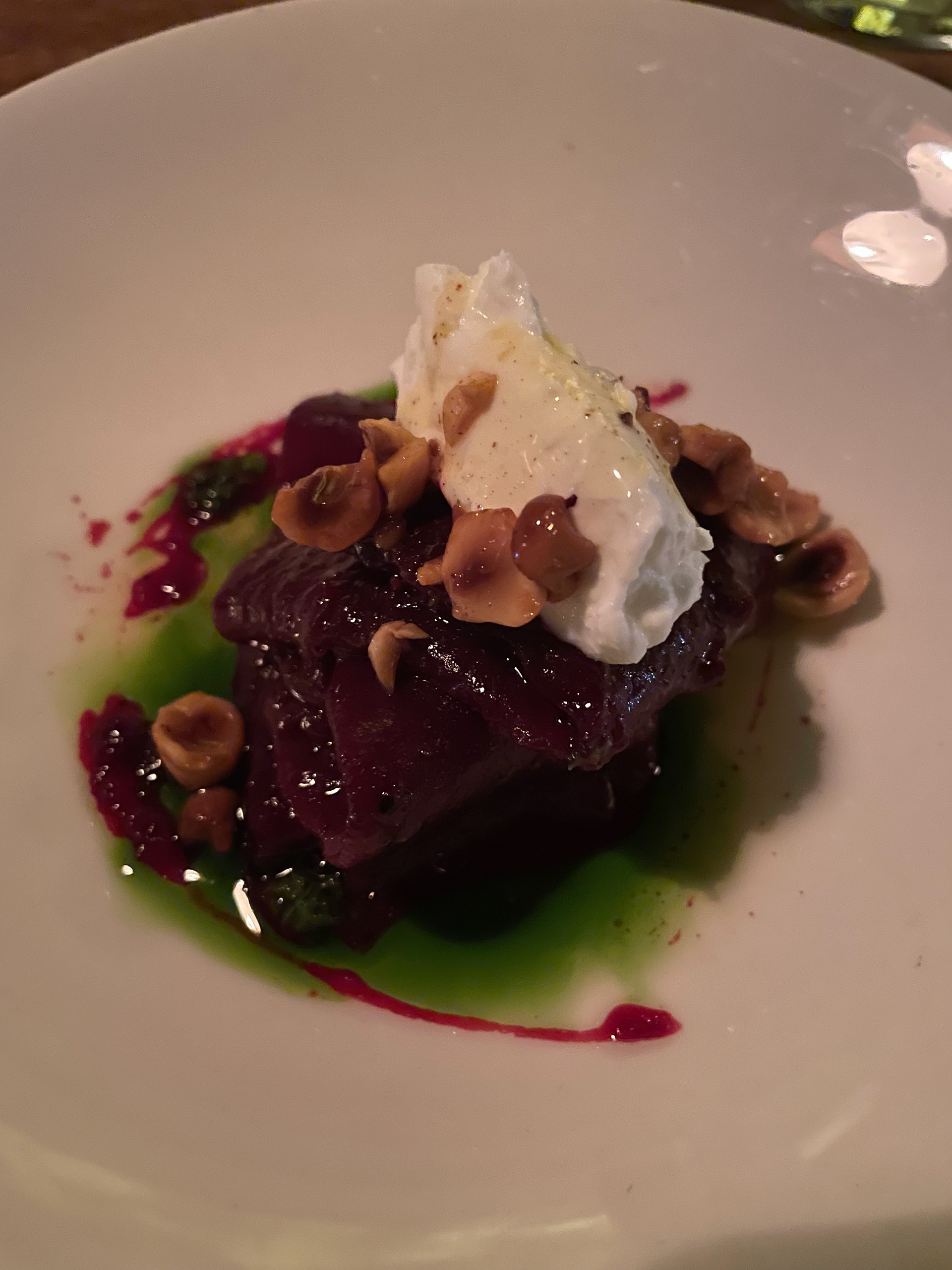
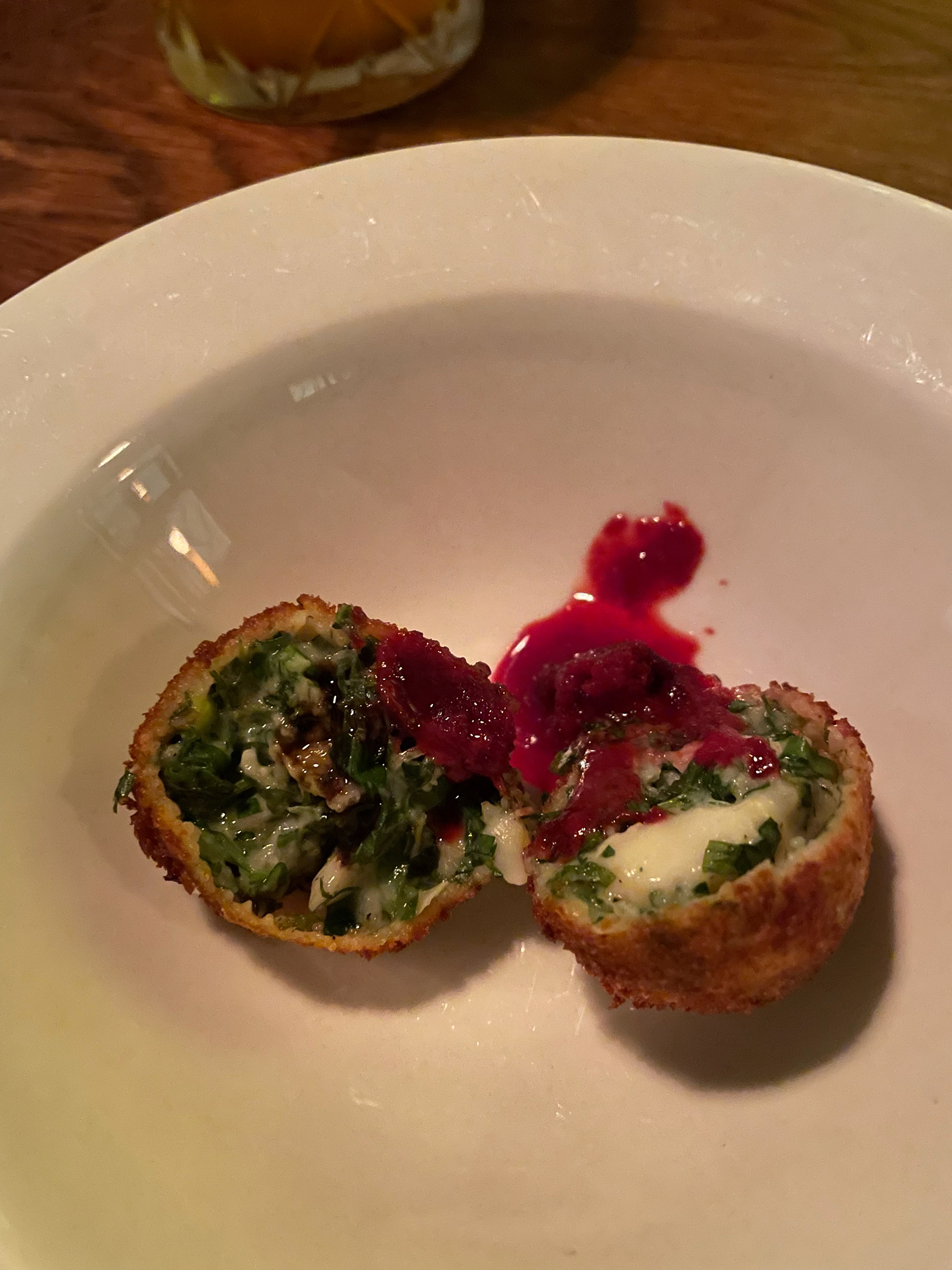

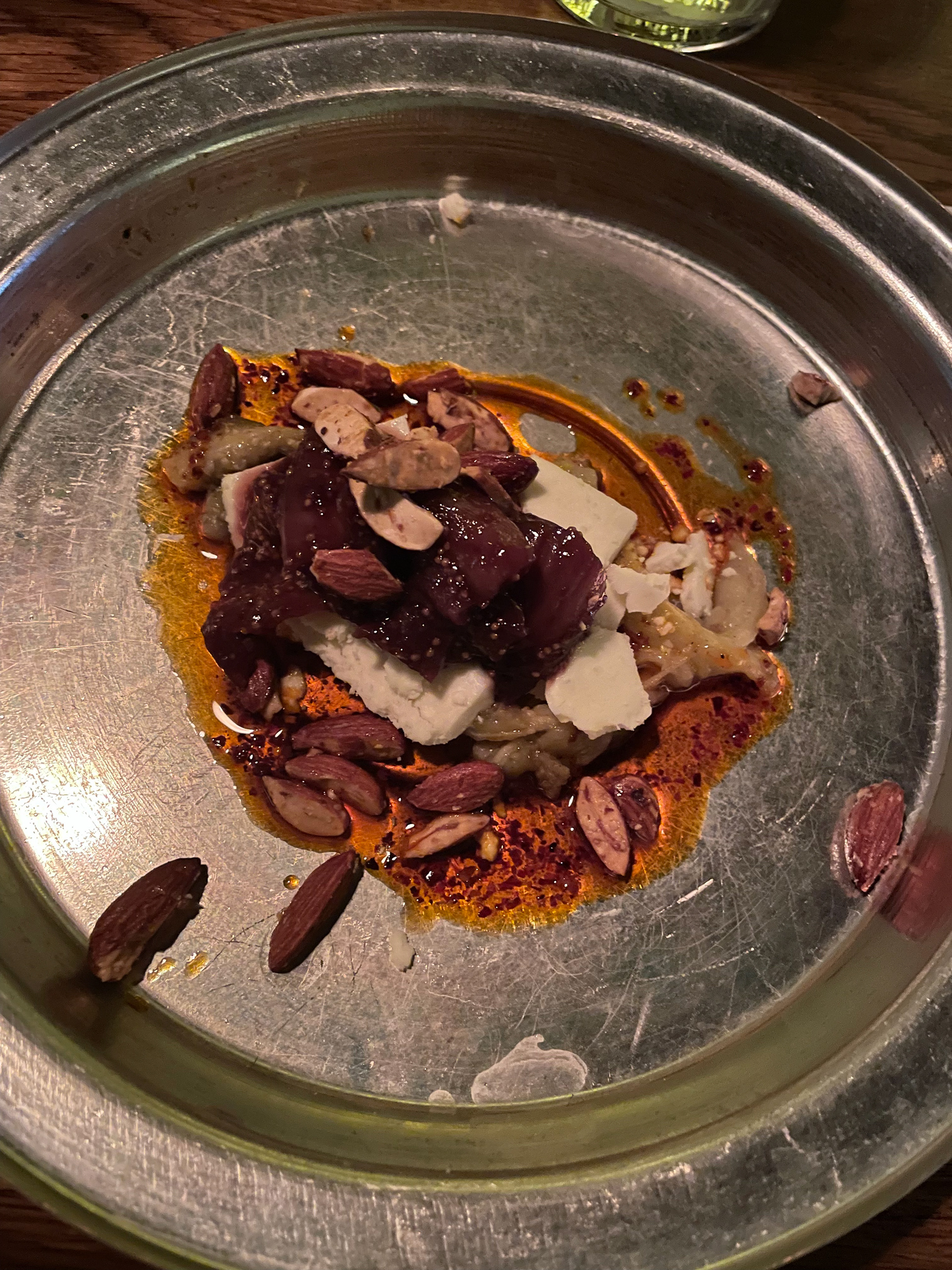
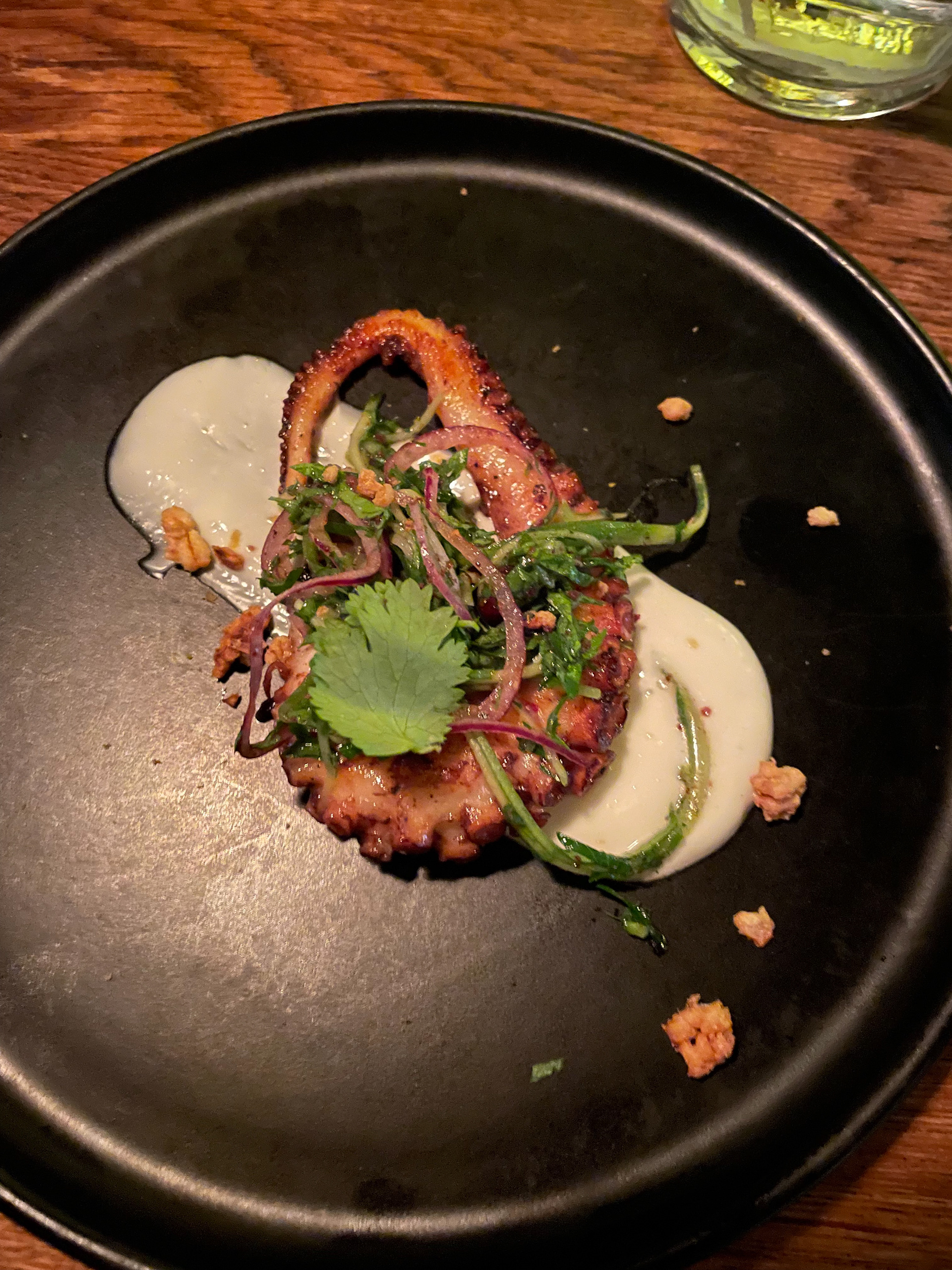

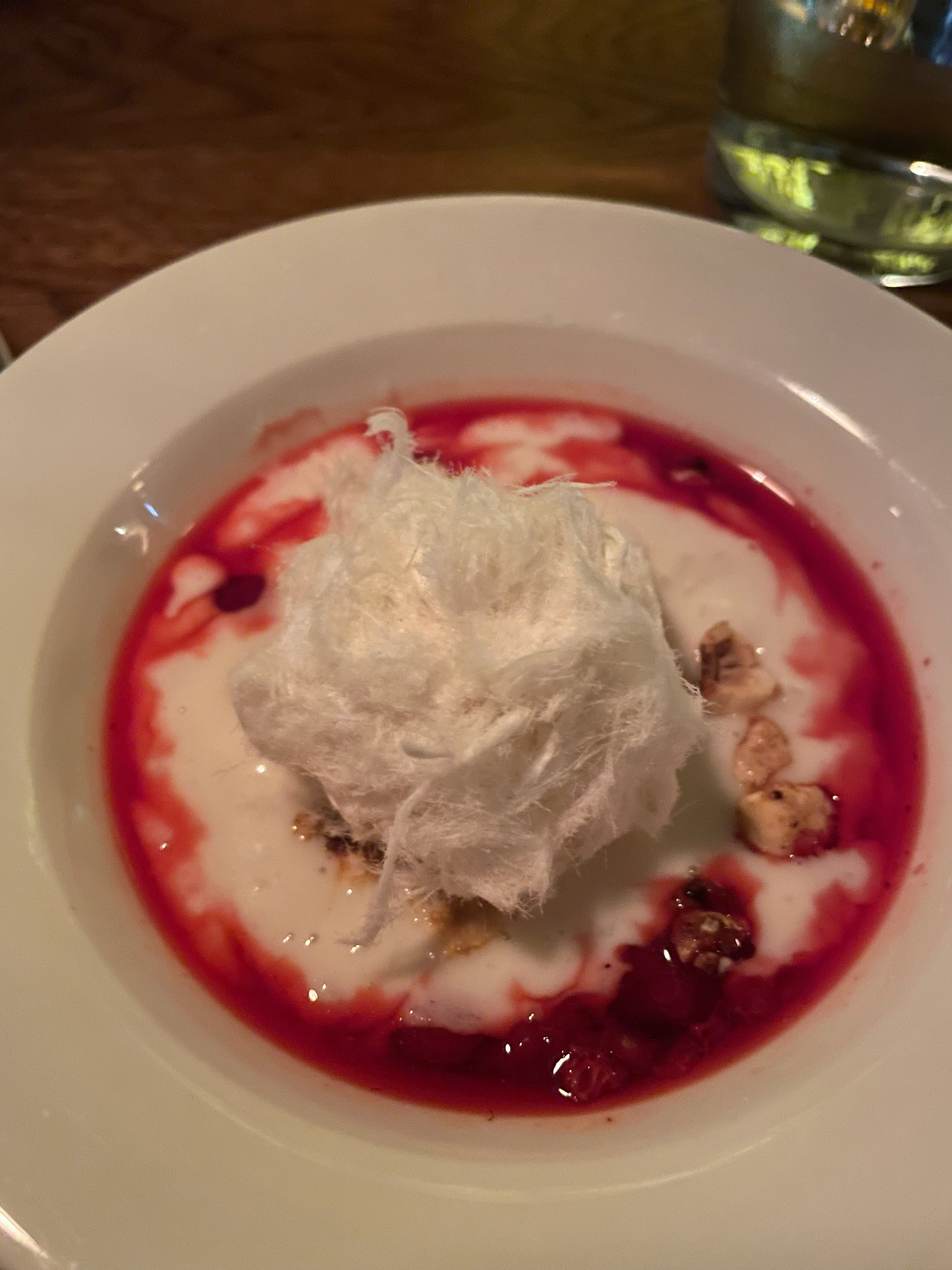
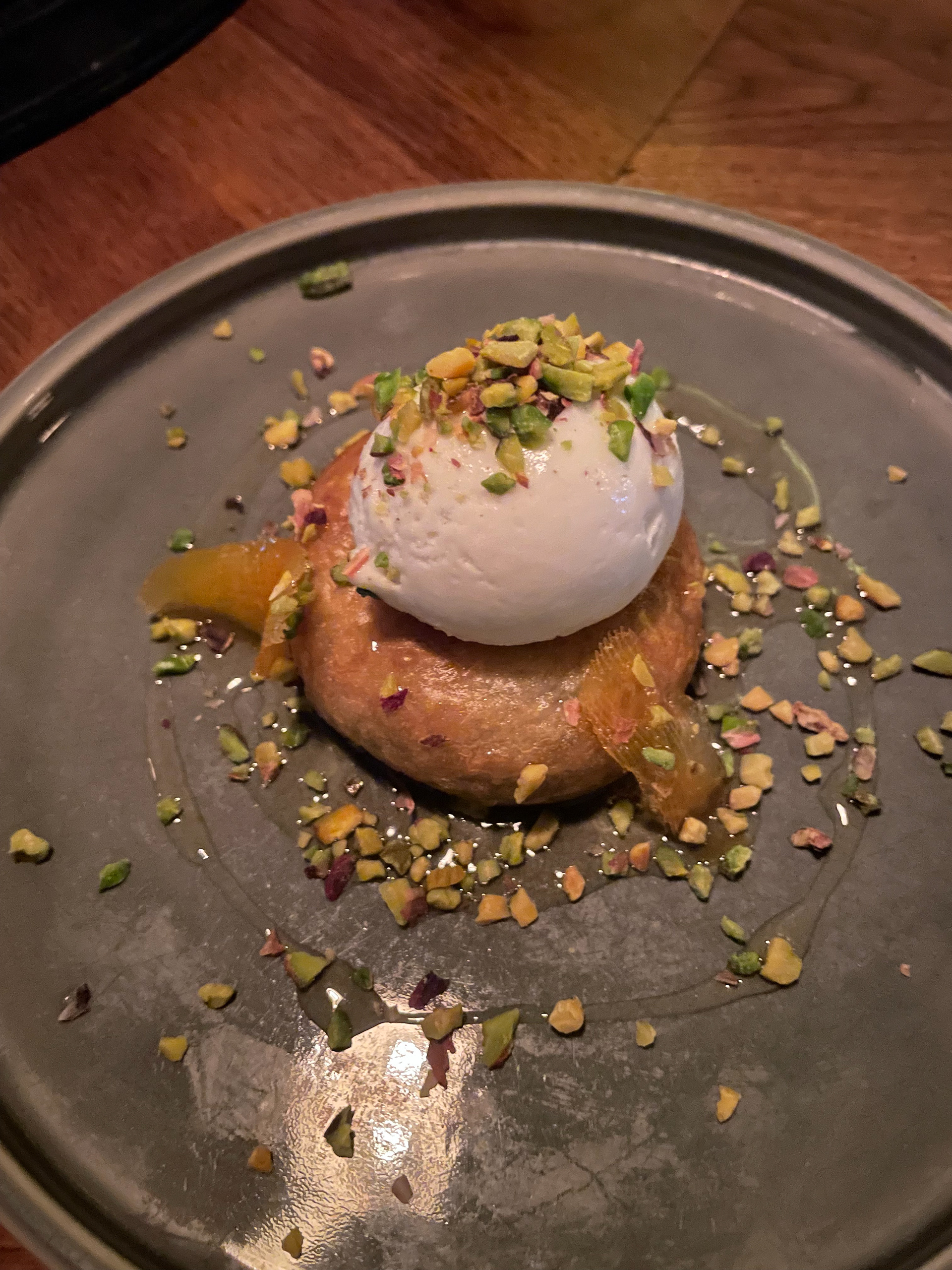
Honourable Mentions for Meals of 2022:
Origen in Oaxaca
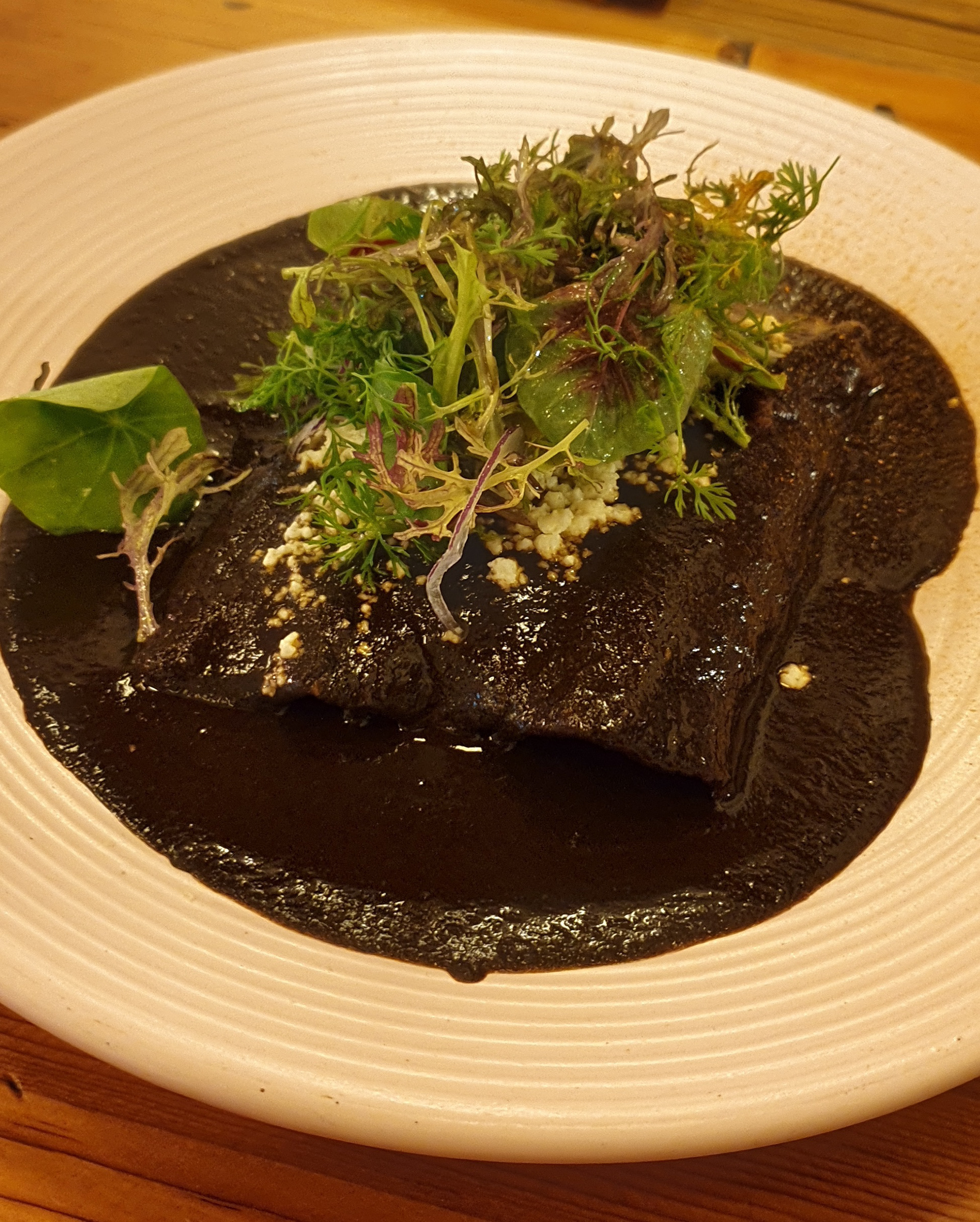

Levadura de Olla in Oaxaca


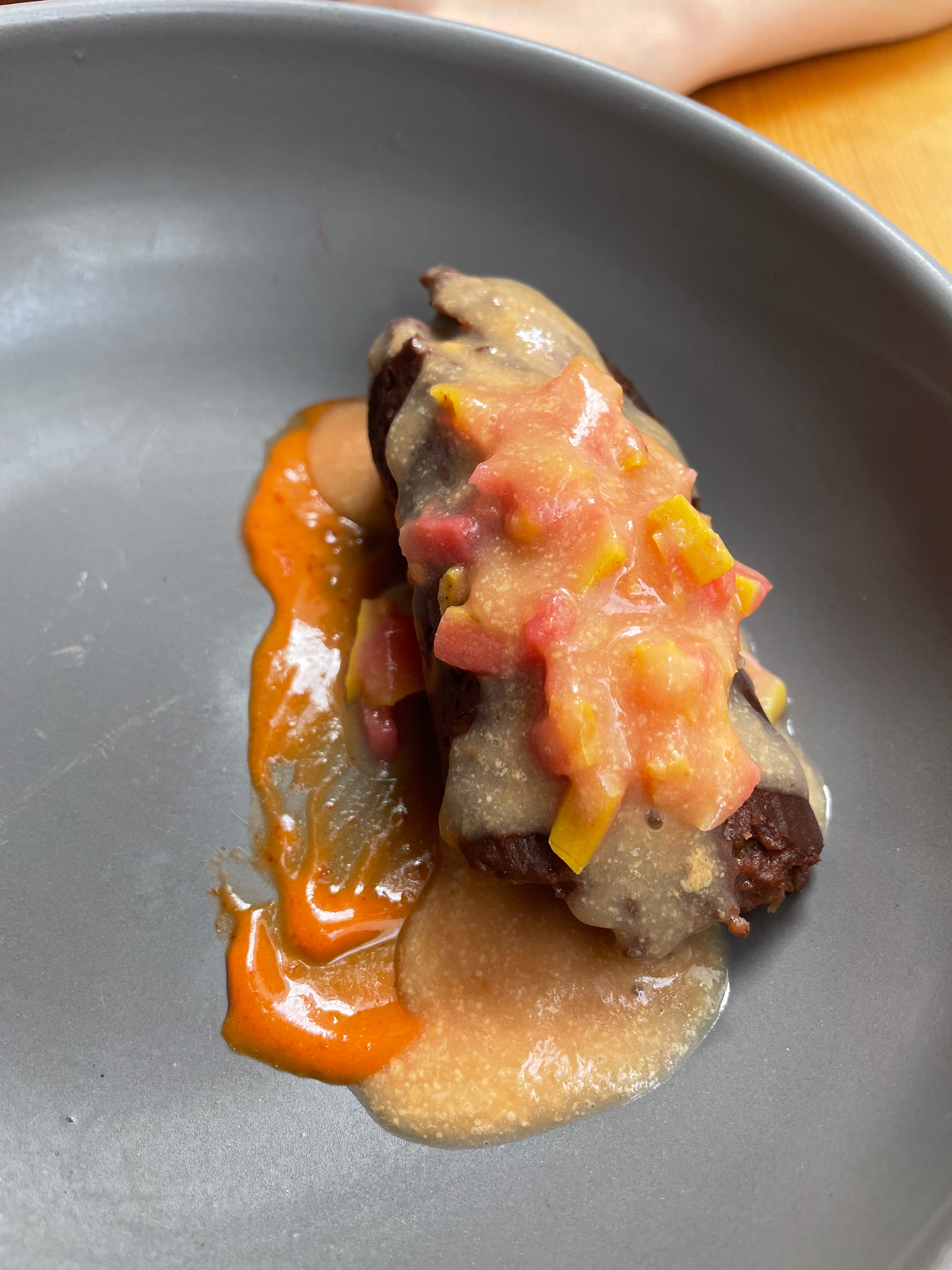
Tierra y Cielo in Chiapas (loved that Tascalate crème brûlée)
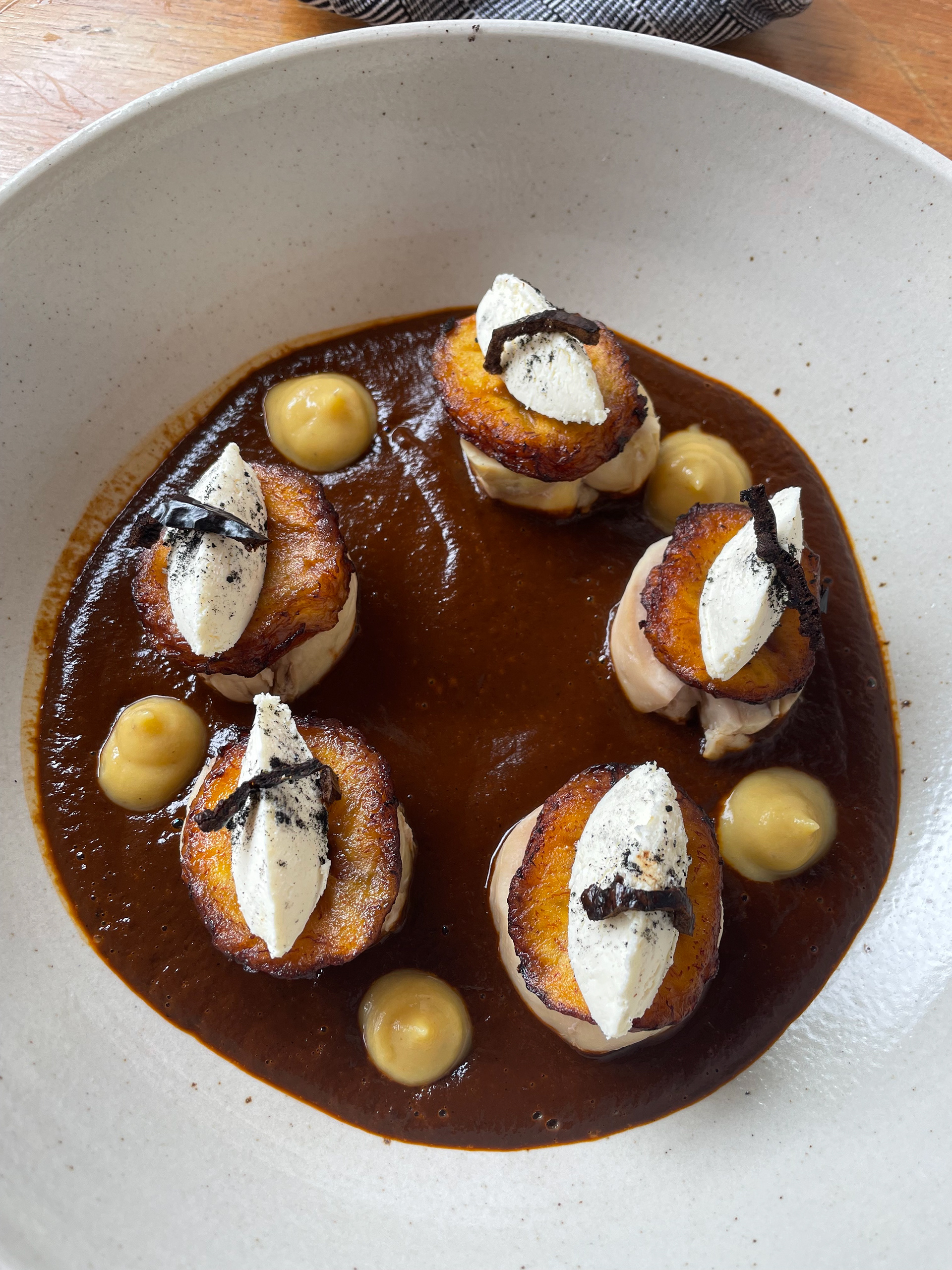
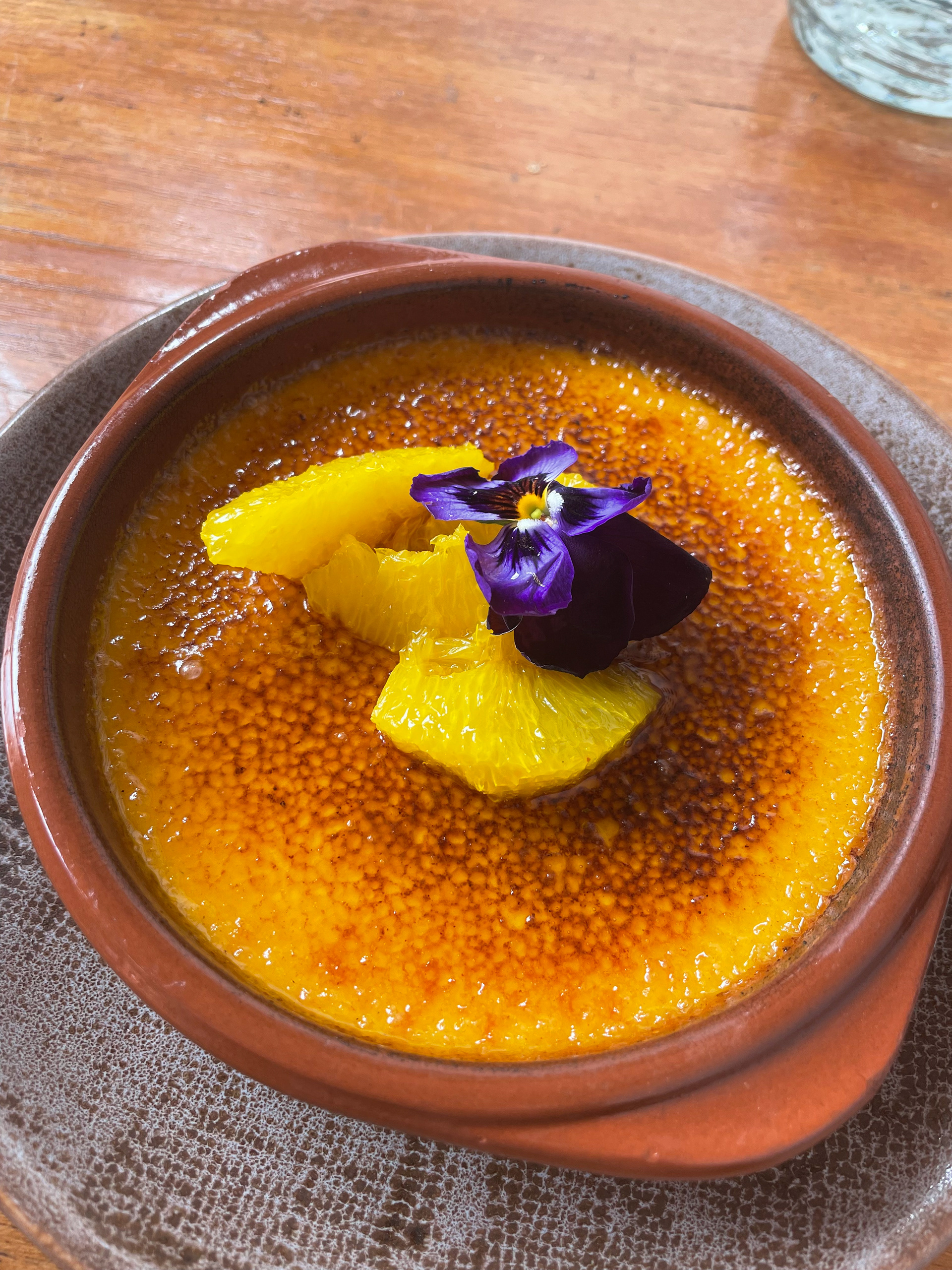
L'Incontournable in Rochefort
Berenjak in London


Hauz Khas Social in Delhi
Asha's in Kuwait
DEL in Delhi
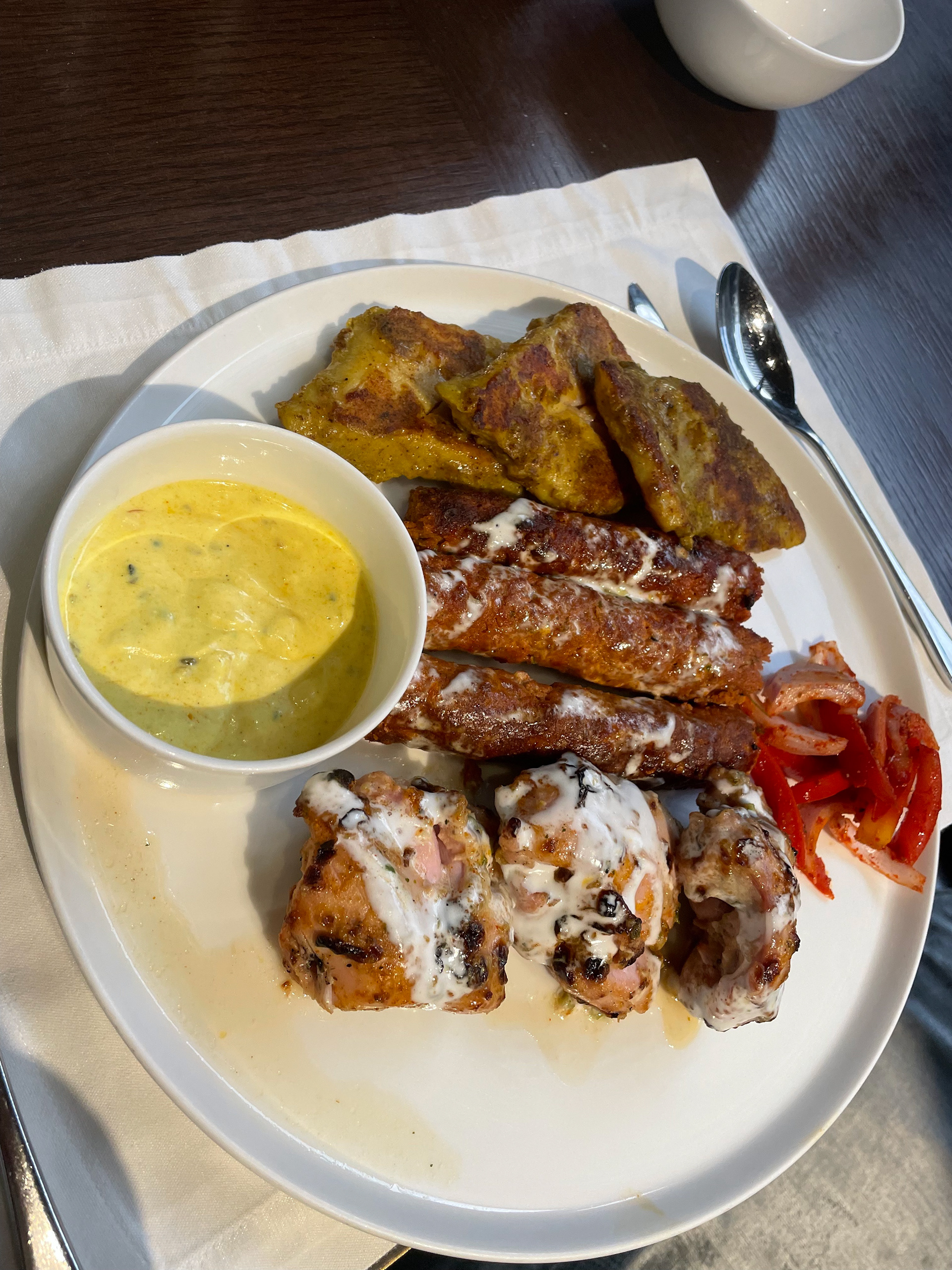

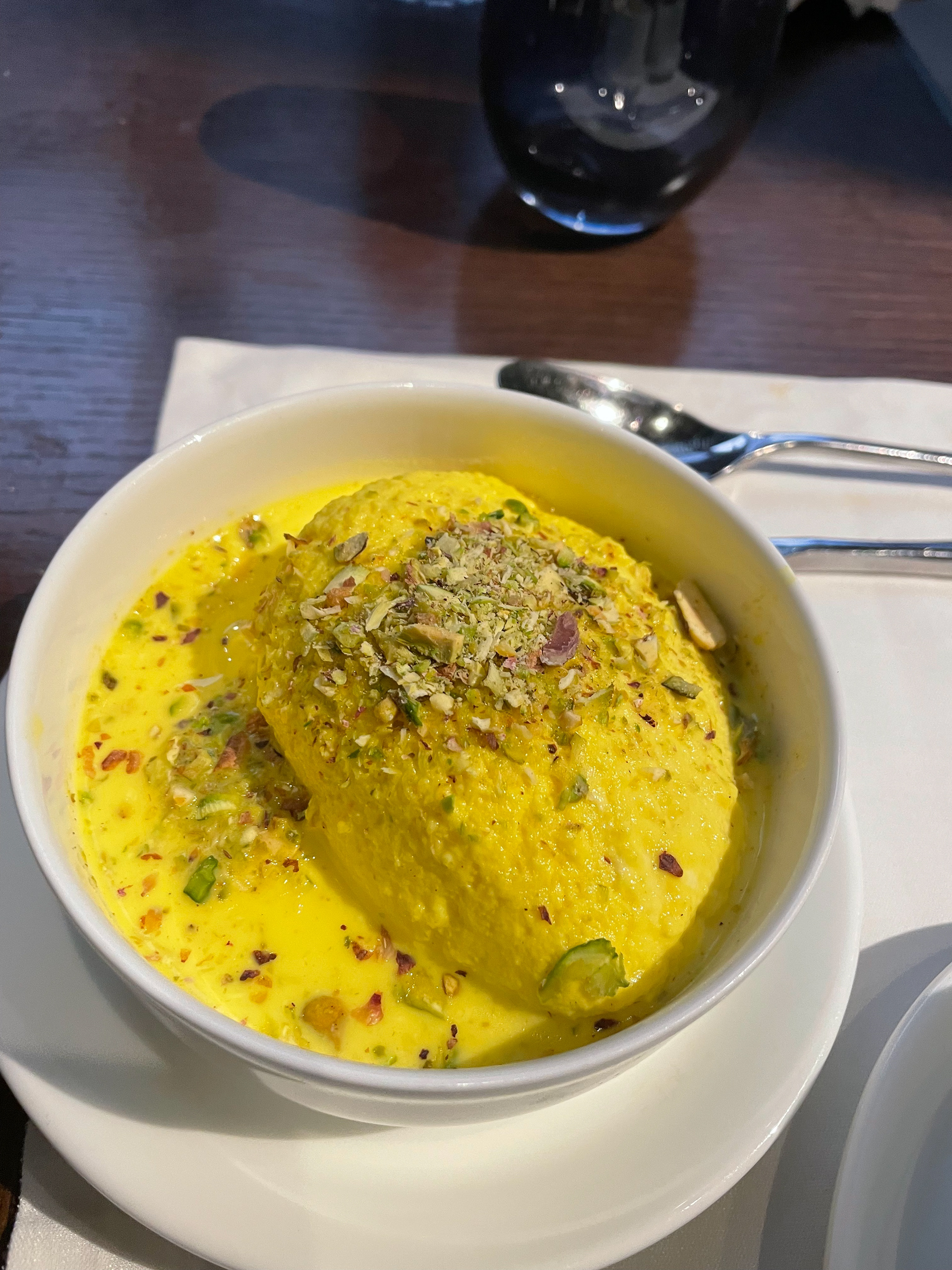
Cellar Door Kitchen in Durham
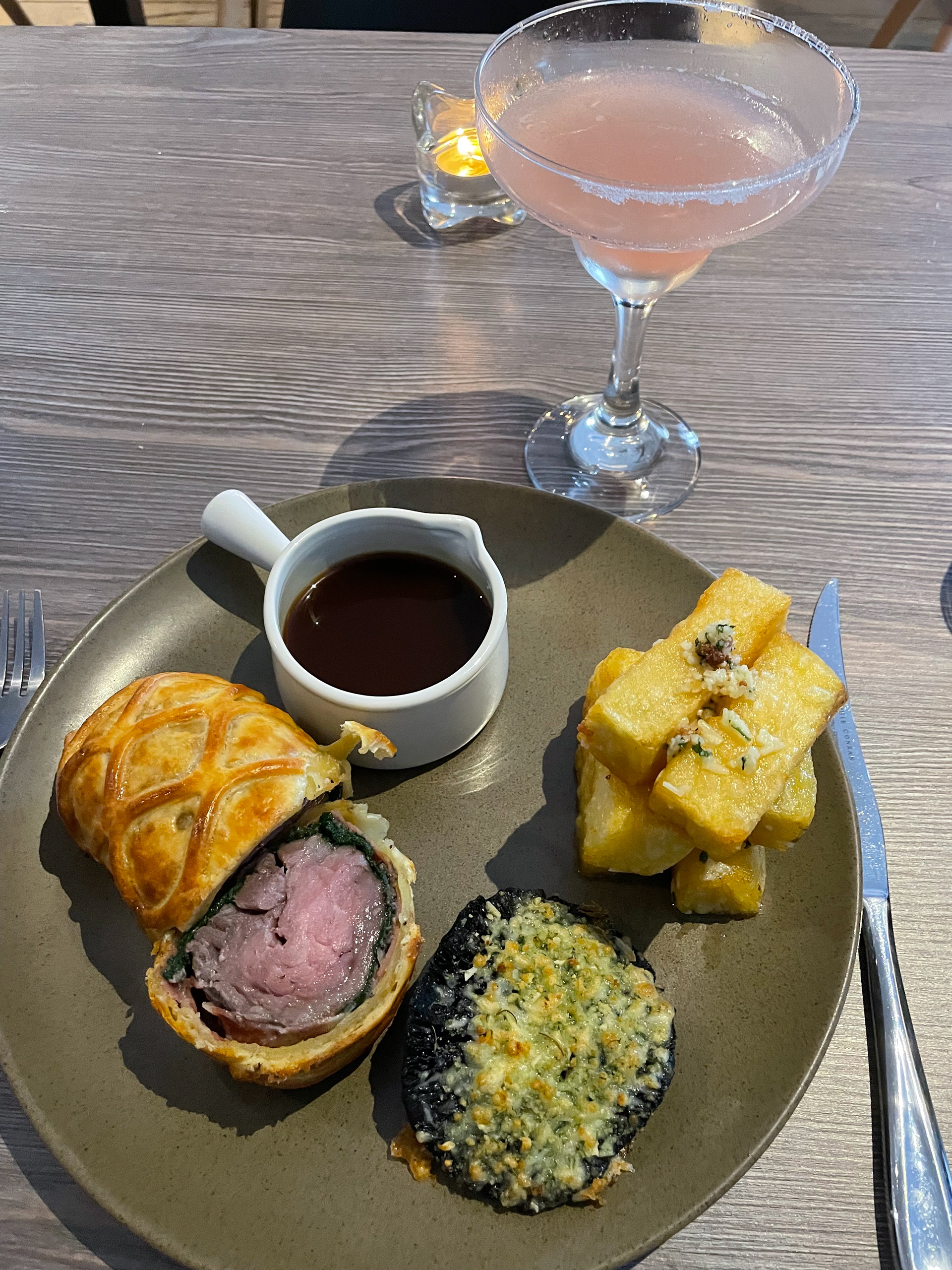

From the list above it is evident that Mexican and Indian are contenders for my favourite cuisine (though obviously Iranian will always be number one).
On the topic of Indian cuisine, a special In Memoriam for Clay's Hyderabadi in Reading which is sadly no more, and a particularly special mention to their delectable saffron-infused bread pudding, double ka meetha, RIP.
For 2023 I am particularly excited to be visiting a region of the world whose cuisine I have loved for years, and I am sure it will not disappoint :)
